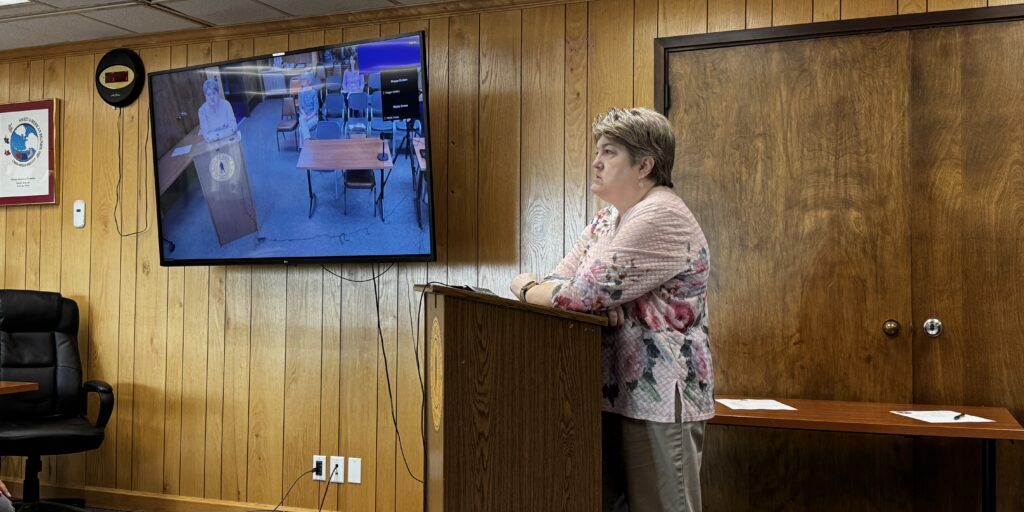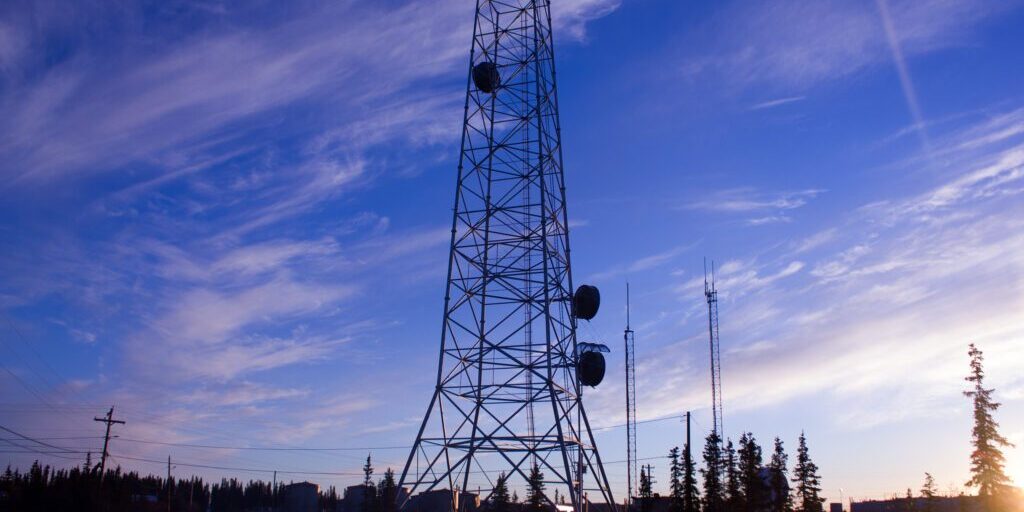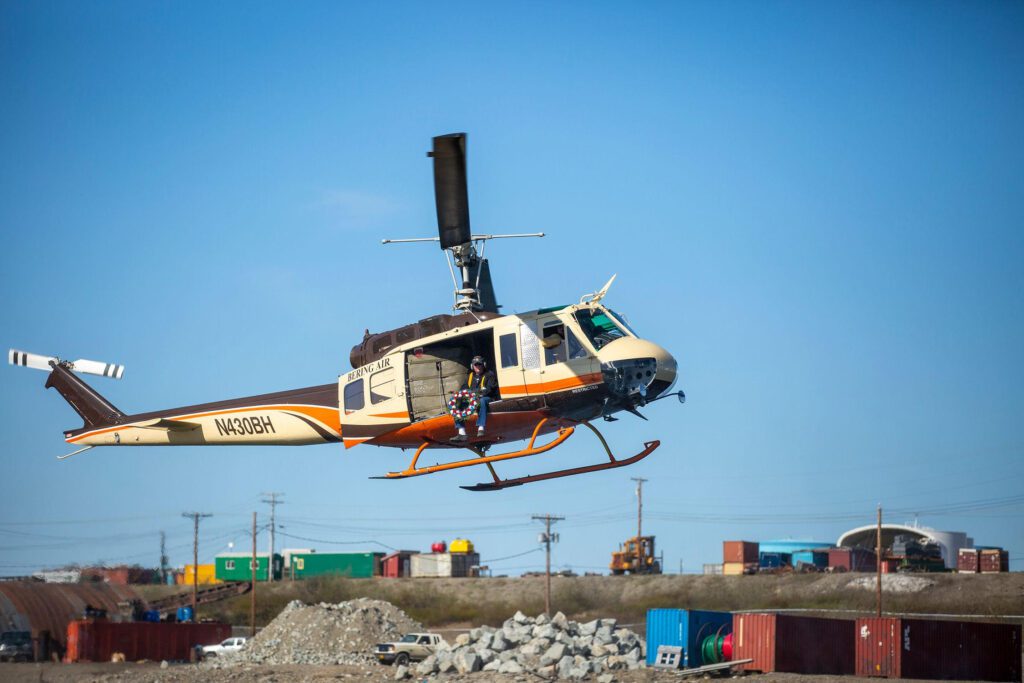After years of satellite-only coverage, GCI’s new Noorvik microwave tower promises to give the community an internet upgrade. The tower is a part of GCI’s TERRA network (an acronym for “Terrestrial for Every Rural Region in Alaska”).
As you fly over the Kobuk river, the tower can be seen from the air. At around 100 feet tall, it’s one of the tallest structures in the village. Noorvik’s TERRA tower is both a receiver and a repeater: it uses a network of similar structures to spread internet service. Bob Walsh, director of rural broadband development, describes the network like a spider web. “We’re coming off of Harvey, which is just outside of Buckland.” He says, “But the spider web would be, like, Selawik to Noorvik. Noorvik to Kiana. And then we’re gonna be shooting from Kotzebue to Noatak next year and then on up into Red Dog.”
The particular section of the web we toured is a 32-mile strand between Selawik and Noorvik. And after that, another 18 miles to Kiana. Walsh says when the tower is turned on, residents will have 3G data capabilities. Their internet won’t receive more broadband, but they will see a decrease in latency.

Before Noorvik, Kotzebue went through similar improvements. Former Noorvik teacher and Technology Director for Kotzebue Middle High School Amy Eakin explains latency as a matter of speed. “So if I were to sit here and say, ‘may I please have a cookie?’ And you sat there and waited thirty seconds or a minute to tell me yes or no… that feels painful. And that’s exactly what our kids are doing and teachers are doing.”
She adds that, for educators, reduced latency could make for improved learning via video conferencing and tele-learning. Those improvements can help telemedicine as well. Maggie Elehwany, Vice President of Governmental Affairs of the National Rural Health Association, says “some of the great success stories are through tele-psychiatry. It really allows individuals very easy, simple access to a health care professional in areas maybe they would be too intimidated to go or don’t have the access to go. There’s a lot of dermatology work done by basically just being able to visualize and see a patient and being able to diagnose things.”
Elehwany says additional benefits include the easy share-ability of patient history, and the ability to connect rural health clinics to their colleagues in a larger city.
The tower will not fix the existing objections of some Noorvik residents. Complaints about a lack of cable service and unfair pricing models will not be met by the recent improvements. The tower is expected to come online with full functionality by the end of the year.







